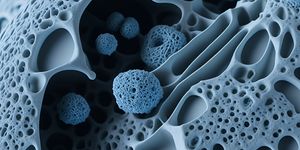Medical imaging that works, regardless of skin color
A team of researchers at Johns Hopkins University have designed and implemented a novel medical imaging technique that can overcoming an often overlooked problem in medical imaging: that existing techniques don’t work as well for people with darker colored skin. The team’s work is described in a recent article published in Photoacoustics.
With many traditional imaging modalities that rely on using light to takes images of the inside of the body, researchers note that there has long been an implicit bias, with these methods working much better for people with lighter skin compared to darker skin. In fact, prior studies have also signaled that other important medical technologies don’t work as well for people with darker skin, such as pulse oximeters which are used to measure blood oxygen levels. Even emerging artificial intelligence technologies have been critiqued for having racial bias. For example, artificial intelligence used to detect skin cancer has been shown to be less accurate for darker skin. This often occurs because of how the artificial intelligence system was trained.
To overcome the problem of bias in medical imaging, researchers built their solution with machine learning tools that have becoming an increasingly common presence in healthcare these days. Specifically, the team created algorithms to better analyze photoacoustic data received from certain imaging modalities. This is particularly important in modalities such as ultrasounds. Usually, tissue exposed to light will expand, creating the sound waves that ultrasounds detect to create moving images of the inside of the body. However, melanin can absorb more of this light and skew the images created, posing problems for people with darker skin.
The algorithm helps process more of the information the ultrasound receives and is ultimately designed to filter out unhelpful signals and “sharpen” the image, much like a camera might automatically adjust a blurry image. Researchers hope to apply their technology to improve breast cancer imaging and the accuracy of cancer diagnoses.
Sources: Science Daily; Photoacoustics; The Guardian








